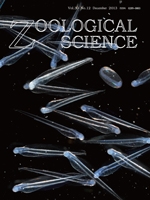The mammalian circadian oscillator is composed of interacting positive and negative transcription events. The clock proteins PER1 and PER2 play essential roles in a negative limb of the feedback loop that generates the circadian rhythm in mammals. In addition, the proteins CLOCK and BMAL1 (also known as ARNTL) form a heterodimer that drives the Per genes via the E-box consensus sequences within their promoter regions. In the present study, we demonstrate that Id2 is involved in stabilization of the amplitudes of the circadian oscillations by suppressing transcriptional activation of clock genes Clock and Bmal1. Id2 shows dynamic oscillation in the SCN, with a peak in the late subjective night. Under constant dark conditions (DD), Id2-/- mice showed no apparent difference in locomotor activity, however, under constant light conditions (LL), Id2-/- mice exhibit aberrant locomotor activity, with lower circadian oscillation amplitudes, although the free running periods in Id2-/- mice show no differences from those in either wild type or heterozygous mice. Id2-/- animals also exhibit upregulation of Per1 in constant light, during both the subjective night and day. In wild type mice, Id2 is upregulated by constant light exposure during the subjective night. We propose that Id2 expression in the SCN contributes to maintenance of dynamic circadian oscillations.
How to translate text using browser tools
1 December 2013
Helix-loop-helix Protein Id2 Stabilizes Mammalian Circadian Oscillation Under Constant Light Conditions
Akihito A. Adachi,
Atsuko Fujioka,
Mamoru Nagano,
Koh-hei Masumoto,
Toru Takumi,
Takashi Yoshimura,
Shizufumi Ebihara,
Kentaro Mori,
Yoshifumi Yokota,
Yasufumi Shigeyoshi
ACCESS THE FULL ARTICLE

Zoological Science
Vol. 30 • No. 12
December 2013
Vol. 30 • No. 12
December 2013
basic helix-loop-helix
circadian rhythm
constant light conditions
Id2
Per1




